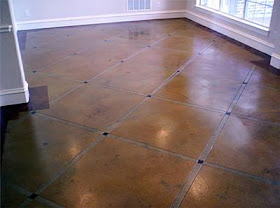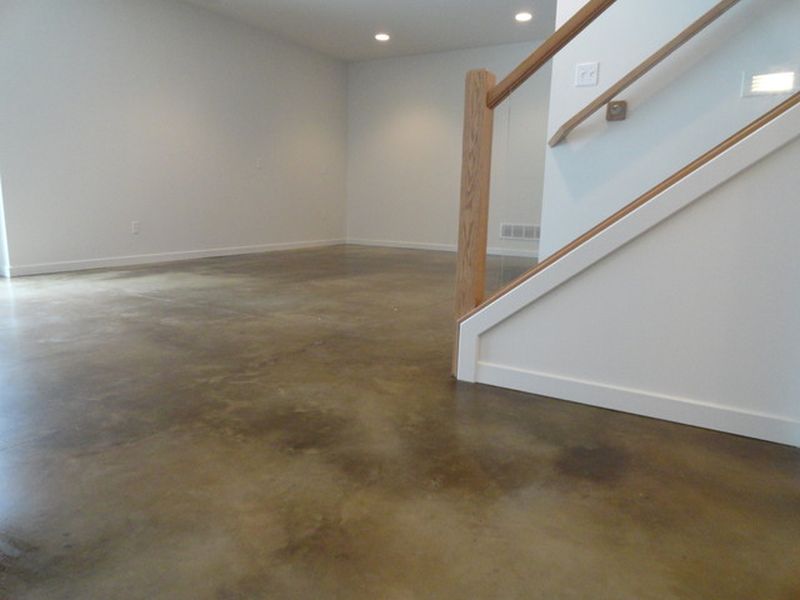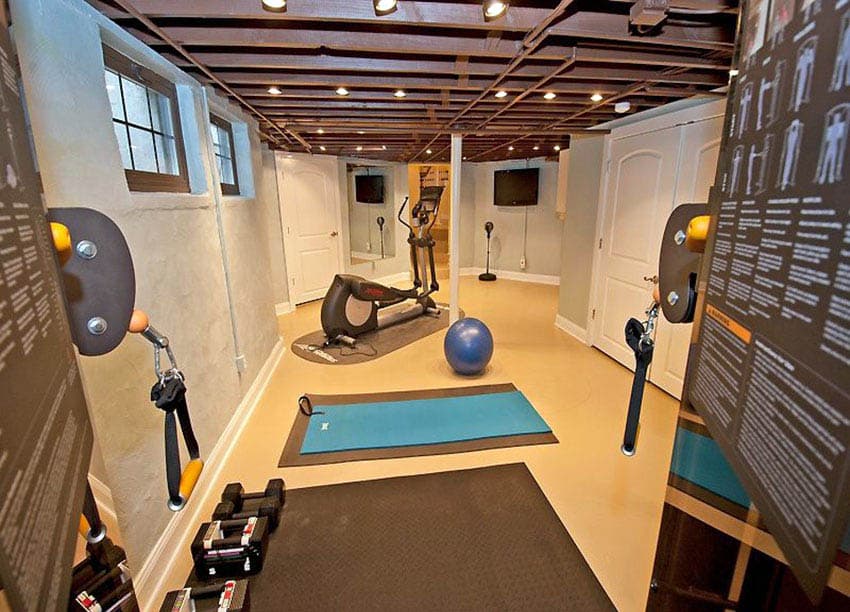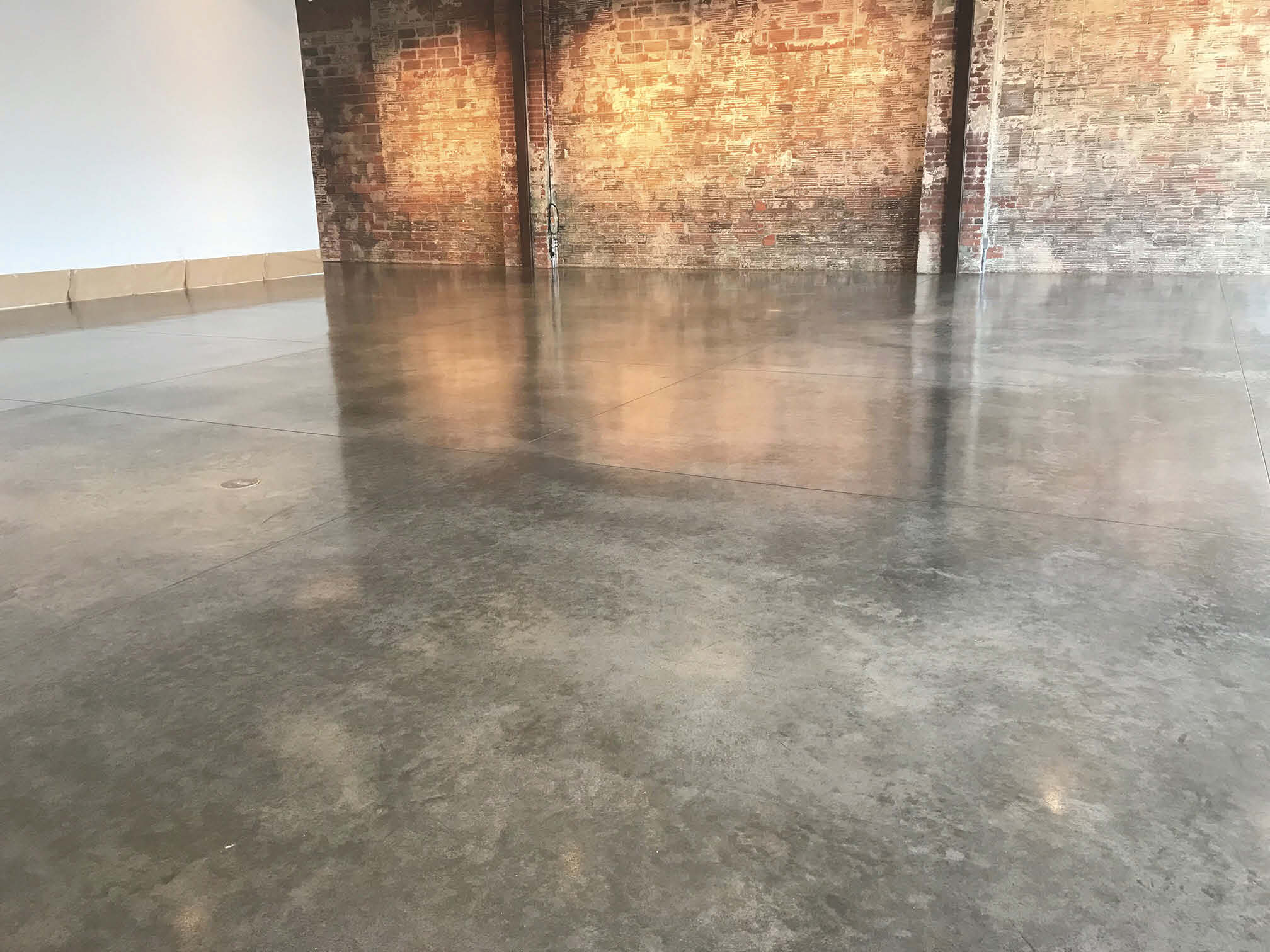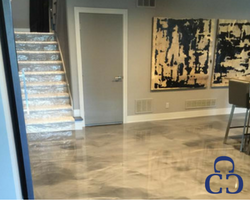Installing linoleum on a concrete basement floor creates a durable, moisture-resistant surface ideal for below-grade spaces. True linoleum, made from natural materials like linseed oil and cork dust, offers distinct advantages over vinyl in basement environments. Its natural composition resists mold and mildew growth common in damp basements. The material’s slight flexibility accommodates minor concrete cracks without telegraphing imperfections. Proper preparation is essential—the concrete must be clean, dry, and level before installation. A moisture test (taping plastic sheeting to the floor for 24 hours) verifies the slab’s readiness. Any existing efflorescence or dampness requires addressing before laying linoleum.
Installation methods vary based on basement conditions. Full-spread adhesive provides the most secure bond, crucial for high-traffic basement areas. Loose-lay or perimeter-glue options work for temporary installations but may buckle in humid conditions. Many installers recommend a moisture barrier underlayment for added protection against ground moisture. Seam placement requires careful planning—avoid putting seams in walking paths where edges might lift. For DIY installations, sheet linoleum proves easier than tiles by eliminating grout lines where moisture could penetrate. Professional installation ensures proper pattern alignment and seam sealing in larger basements. The process typically takes 1-2 days depending on basement size and layout complexity.
Design options make linoleum an attractive basement flooring choice. Modern linoleum comes in vibrant colors and patterns that brighten typically dark basement spaces. Flecked designs hide dirt better than solid colors in high-use areas. The material’s natural antimicrobial properties benefit basement playrooms or exercise areas. Some homeowners create borders or inlays using contrasting linoleum colors for decorative interest. Unlike cold ceramic tile, linoleum provides slight cushioning underfoot—a welcome feature in basement laundry rooms or workshops. Its natural warmth makes barefoot comfort possible even in below-grade spaces. Coordinating the floor with basement wall colors creates a cohesive, finished look.
Maintaining linoleum basement floors is straightforward but requires specific care. Regular sweeping prevents abrasive dirt from scratching the surface. Damp mopping with pH-neutral cleaners preserves the material’s protective coating. Avoid excessive water that could seep into seams and promote adhesive failure. Immediate spill cleanup prevents staining, though linoleum’s through-color design means scratches and wear don’t show as prominently as with vinyl. Periodic application of linoleum polish restores shine in high-traffic paths. In flood-prone areas, quick water removal prevents warping—linoleum can often be dried and re-adhered if addressed promptly. These maintenance practices extend the floor’s lifespan to 20-40 years in basement applications.
Cost and environmental benefits make linoleum a smart basement flooring investment. While pricier than vinyl upfront, its durability and natural composition offer long-term value. The material’s sustainable production and biodegradability appeal to eco-conscious homeowners. Linoleum’s natural resilience provides comfortable standing for basement workbenches or craft areas. Its sound-absorbing qualities reduce noise transfer in basement entertainment rooms or home offices. When properly installed on prepared concrete, linoleum creates a warm, healthy basement environment resistant to the moisture and temperature fluctuations common below grade. This classic flooring solution continues to offer modern performance for challenging basement conditions.
Row House Refuge: Basement Flooring Ideas
How to Install a Plywood Shop Floor – The Wood Whisperer Flooring, Basement flooring options
Choose These Low-Maintenance Floor Ideas For Your Basement Remodel
What’s New in Concrete Flooring?
Linoleum Flooring Removal From Concrete Jackd Rpaskal
Basement Flooring Ideas (Best Design Options) – Designing Idea
How To Finish Concrete Floors MyCoffeepot.Org
Blog – Why Concrete Is The Preferred Basement Flooring Material
MODE CONCRETE: Cool and Modern Basement Concrete Floors – naturally achieved with non-toxic, eco
Making a Concrete Basement Floor Look Like Tile An American Family
Related Posts:




